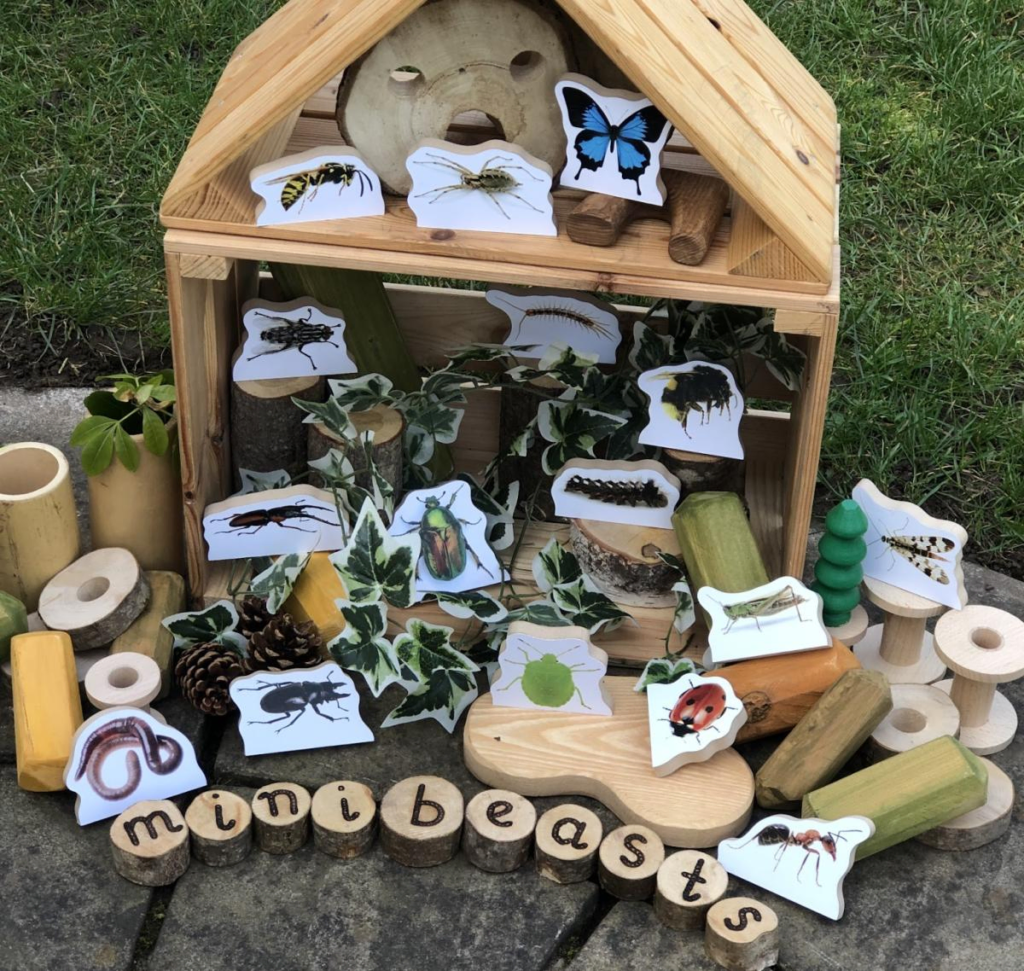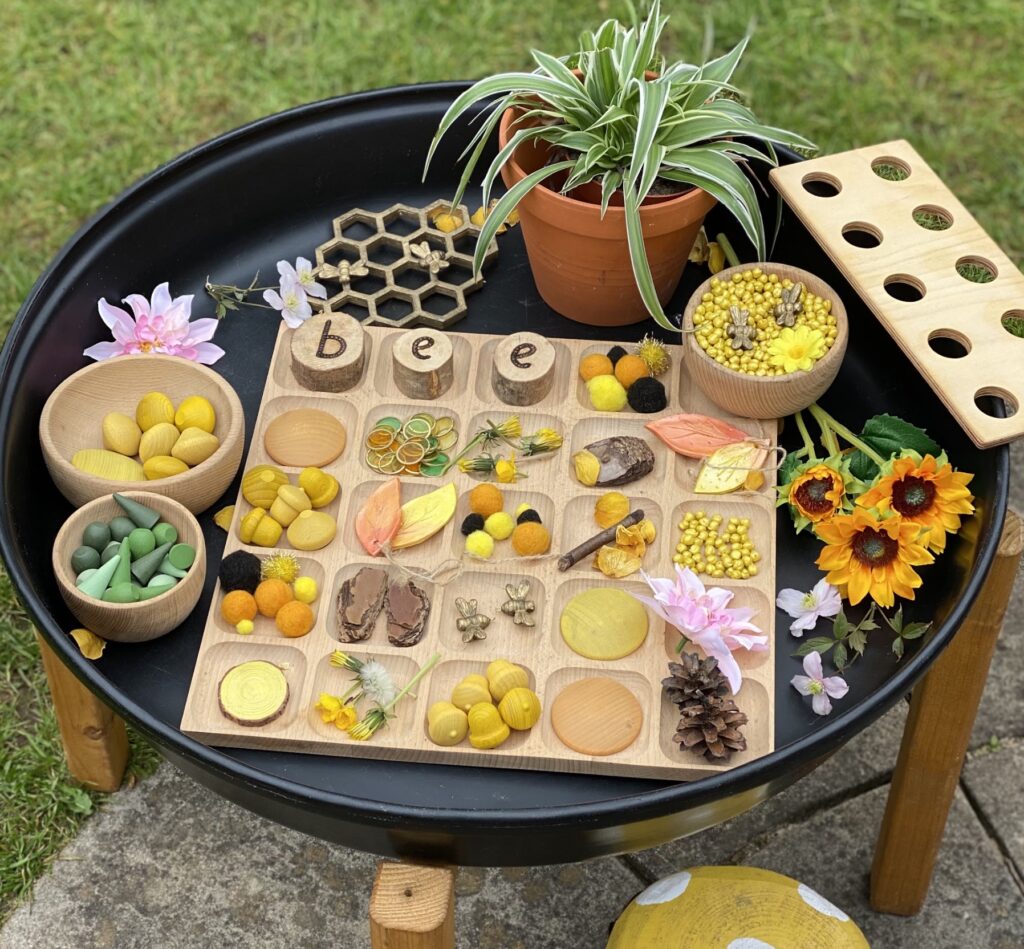Marvellous Minibeasts
Minibeasts are a source of endless fascination for children...and often grown ups too. This interest might stem from finding bugs in the garden, a change in the seasons and the emergence of bees and butterflies or a book the children have particularly enjoyed. Educators can extend this interest, covering all seven areas of learning across the Early Years Foundation Stage (EYFS).
In this blog, we will be sharing some of our favourite ways to incorporate minibeasts into play and learning activities.
Small world
Set up inspiring minibeast worlds in the tuff spot. You could include natural loose parts to encourage language and creative play. Examples are pine cones, pebbles, sticks, leaves, flowers and shells. Sand, soil, water and moss make great bases for this type of play.

Make a bug hotel
This could be on a small or large scale and the only limits are your own creativity. You could section off a space in your outdoor area where children can collaborate to create a bug-tastic hideaway. Experiment with a range of resources, from pallets and bricks to straw and pipes. Alternatively, your bug hotel could be scaled down using smaller resources which children can arrange and join together. Try using cardboard tubes, flowerpots, tyres and milk cartons.
This type of activity requires children to combine differed materials, thinking about their properties, problem solving, exploring shape and developing communication and language skills.

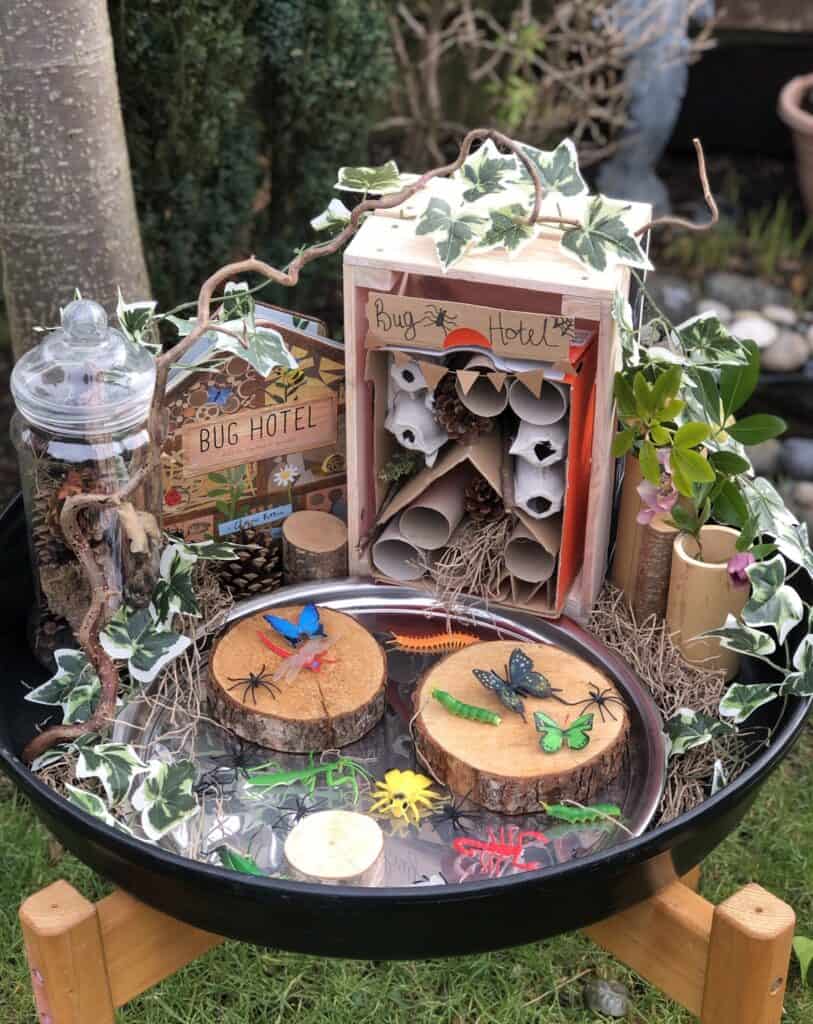


Maths play
There is so much scope to get creative with minibeasts in order to inspire mathematical exploration and learning. Use them for counting, sorting, subitising, estimating, prepositions and exploring symmetry.
Resources you could use include:
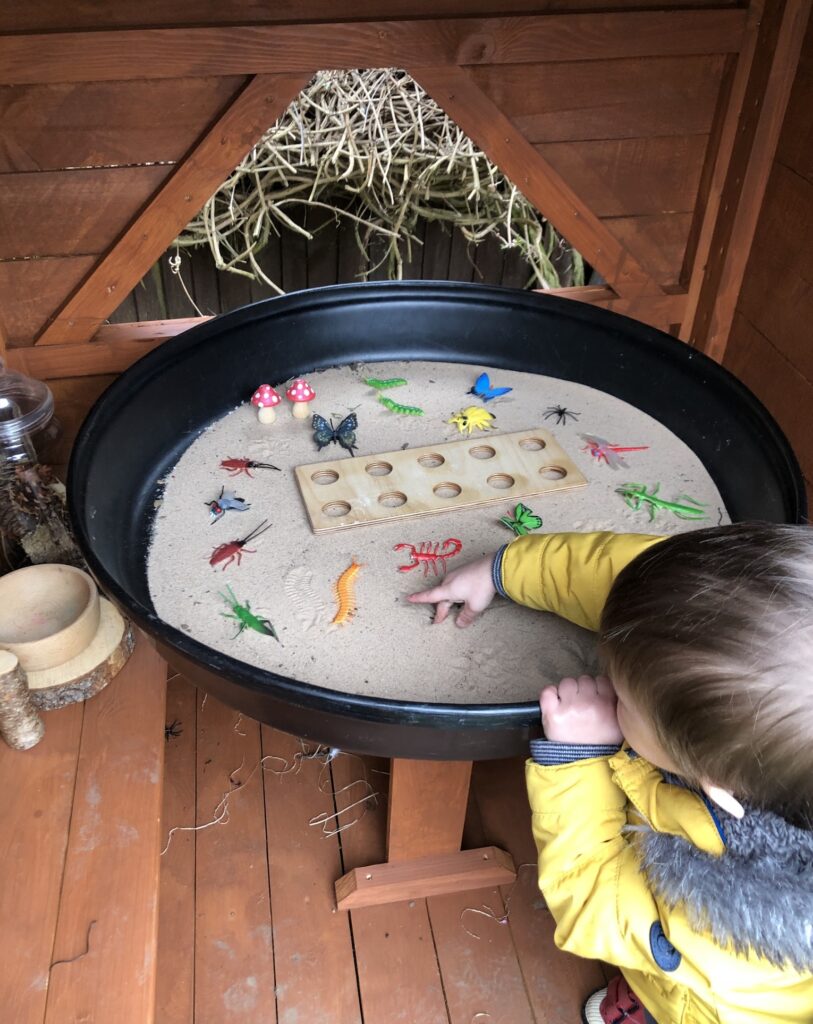
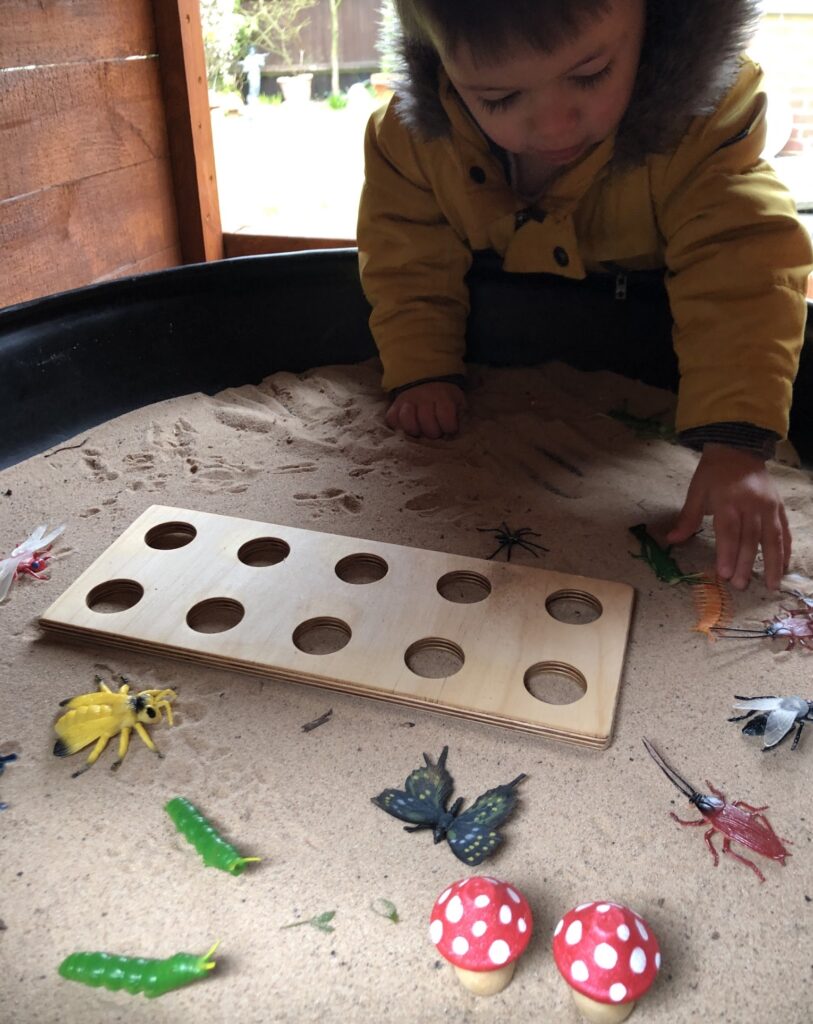

Bread worms
Keep it simple and buy a packet mix or make your own dough. Children will be building strength in their hands and fingers as they mould and shape the dough to make their own edible Super Worms. This can promote conversation, giving a narrative to the children's actions - who has made the shortest? Longest? Thickest? etc,
Move like minibeasts
Practise your physical skills by moving like bugs. It's great to have a go at this to music - The Flight of the Bumblebee is a great one! Try wriggling like a caterpillar, fluttering like a butterfly, slithering like a worm and hopping like a grasshopper. A fantastic way to build gross motors skills!
Playdough minibeasts
Combine playdough and loose parts to encourage children's creativity. Use a variety of resources which children can combine to create minibeast representations.
Ideas include:
- buttons
- lollipop sticks
- matchsticks
- sequins
- glass nuggets
- shells
- googly eyes
Retelling stories
There are many, many fantastic bug books which really capture children's imaginations.
Some of our favourites include:
- Super Worm
- The Very Hungry Caterpillar
- The Big Book of Bugs
- What the Ladybird Heard
- Yucky Worms
- Bug Hotel
- The Very Lazy Ladybird
- Bumble Bear
Include books with your play experiences, indoors and outdoors, to encourage children to retell favourite stories. This is a great way for children to develop their creativity by acting out the story, retelling it from memory, sequencing and engaging in book based role play. It's also a good idea for an adult to scribe the words as children retell stories - this helps children to realise that their words matter and that they carry meaning.
Bug pets
Have a go at making your own minibeast friends by getting creative with rocks and paint. Children can make a spotty ladybird, a symmetrical butterfly or stripy bee. Alternatively, they could use their imaginations to create something a little different, giving it a name and even building a story around it. When finished and varnished, they would make a lovely outdoor display.
Planting flowers
Get out the trowels and watering cans ready to plant some seeds or plants to attract bees and butterflies. Perhaps you could involve families at the setting, by asking for donations of seeds, bulbs or plants and then host a planting day. Children can label a wooden lollipop stick so they know which plant is theirs.

Transient art
This is a fabulous way to get those little fingers active, encouraging the development of fine motor skills. As children manipulate small loose parts, they are also developing their hand eye coordination, dexterity and pincer grip. There are so many options with what you make available for children to use but we particularly like....
- wood slices
- buttons
- picture frames
- curtain rings
- cotton reels
- sticks
- bead chains
- pebbles
- petals
- seasonal treasures
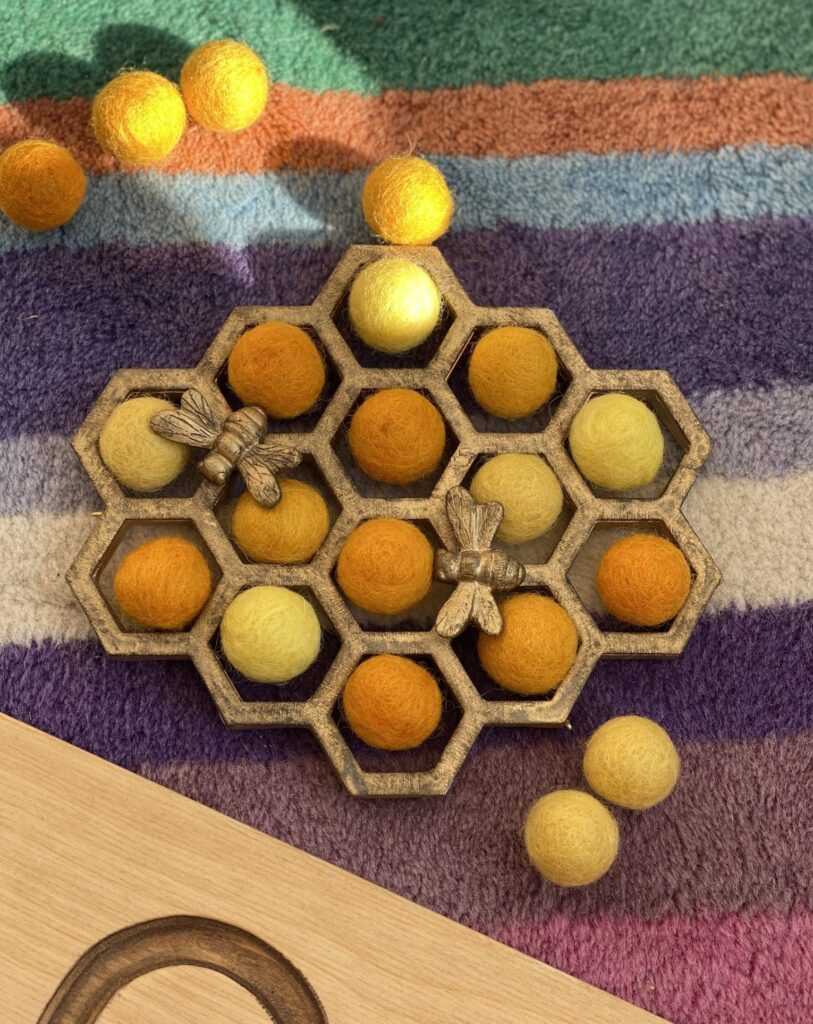
We hope this blog has inspired you to get creative with your minibeast play provocations in your setting. As always, remember to tag us in your play on our socials.
We hope that you have got lots of ideas to take away from this Minibeasts post to create your own Minibeast Activities.
Don’t forget to share your activities with us on our social channels!
Facebook: https://www.facebook.com/cosydirect/
Twitter: https://twitter.com/cosydirect
Instagram: https://www.instagram.com/cosydirect/
With thanks to The Cosy Creatives for this blog post.


